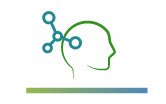Message Received
“If you start to look around, you will start to see.” Anne Lamott
At times throughout your life, you might look around and see that where you are is not where you want to be. But now what?
In order to see ourselves and our place in the world with new eyes, we need to have some understanding of how we perceive our world and our place in that world right now.
And for me, there’s no better place to discover this than in Nature. Because Nature is constantly showing us all the signs we need to know in order to open ourselves to new possibilities.
Signs, which can include objects, images, sounds, thoughts, or feelings, often go unnoticed simply because we have not learned to watch for them and to make them meaningful in relation to how we navigate our daily lives. And you don’t need oracle cards or a crystal ball or a magic wand to learn to see the signposts along the way. You just need to notice what’s right in front of you and then – and here’s what might be a challenge–take a leap of faith that what you’re seeing is being presented to you and you alone for a reason. And then, if you choose, take action based on what the sign means for you.
How we interact with and react to the environment says a lot about how we perceive the world around us. Each of us interacts with the world from our own unique perspective. This interaction is built up of all our past, present, and even potential future experiences and dictates how we navigate our daily lives and take action. However, for most of us, we can be out in the world but not actually aware of it.
Try this experiment the next time you’re out and about, even just taking a walk: Stop, turn in a circle, and look around. Without thinking too hard about this because there is no right or wrong answer: What is the first thing you focused on?
Now ask yourself this: Why did you focus on that thing? For most people, the first thing they notice is a result of their five senses. Maybe the object is your favorite color or you saw a bird you liked or you noticed a dog because you heard it barking. Why is this important? Because how we construct our initial perception of the world is usually determined by our sensory organs and nervous system.
But now let’s go a step further and look a little deeper. Focus your attention again on the object. How does the object make you feel? Now we start to get out of our heads and into our hearts. Is this warm fuzzy? Or anxious, sad, elated? We tend to recognize the sense of a thing, but not the feel of the thing. But the feel of what we’re focusing our attention on is what often drives us to some kind of action. If you feel safe and happy, maybe you’ll walk further. But if you’re feeling anxious, you might decide to cut your walk short, go another direction, or just stop walking entirely. Your action is a reflection of your perception of the world around you and, in this case, how it makes you feel.
Here’s an example of how this works for me. One of my dogs is leash reactive. When I take him for a walk, I first see whether there are other dogs around. If not, I feel pretty calm and confident, and we’ll start walking. But if I suddenly see dogs, maybe on leash or, worse, off leash, now I feel anxious. So my perception now is that this place isn’t safe for us, and I leave. My action is driven by the feel of the place, whether conscious or unconscious.
“Some things have to be believed to be seen.” Madeleine L’Engle
So, how might we become more aware of our current perception of the world and how this is driving us to action? And more importantly, how might this new awareness help us choose a new course of action to get from where we are to where we want to be?
Remember the movie, “Close Encounters of a Third Kind”? Richard Dreyfus points to the mountain he’s carving into his mashed potatoes, and says with some anguish, “This means something. It’s important.” At that moment, he doesn’t know why it’s important, only that the feel of it is, and as a result, he’s driven to action. How he perceives the world—and how he ultimately comes to navigate through it—has fundamentally and irrevocably changed.
Let me give you an example that just recently happened to me.
Day One, I see a hawk perched at the top of one of my trees, not 50 feet away. I’m mesmerized and feel blessed that the hawk is there and close enough for me to really look at it. I do notice that he seems to sit there for quite a long time, but again, I’m simply thrilled.
Day Two, I glance back at the tree—and he’s there again. And again, he’s there for a long time. Now I ask myself, maybe this means something? So this time, I pull out my “Animal Speaks” book to find out what “Hawk” might mean from a “maybe it’s a sign” standpoint. Ah, there it is–Hawk reminds us to keep an eye on the big picture. It just so happens, I’m about to be laid off, and I’ve been trying to figure out what I should do next. So I think, “Got it, I need to consider all of my options when looking for another job.”
Day Three, I look up—and lo and behold the hawk is back. I think, “Okay, maybe I’m not considering other options, so now I’ll expand my job search criteria. Got it—thanks!”
In my experience, Spirit is not subtle. When a sign appears and a message is sent, it’s meant to be heard loud and clear. Just because we do not get it at first doesn’t mean that it’s not there. Sometimes these messages will be sent repeatedly until we do get them.
Day Four, and I can’t believe what I’m seeing. Because there he is again. So, this time, I go back to the book to see if I missed something—and there it is. Hawk reminds us to see the big picture in order to stay grounded to find what we need. The hawk scans the world around it until it finds its prey on the ground. Why is this significant? Because right before the hawk showed up, one of my spiritual advisors told me that I needed to start doing daily grounding meditations because I was allowing the big picture to overwhelm me. I looked up at the hawk and said aloud, “Okay, now I get the message.”
Now, you may or may not believe that the hawk was a sign meant just for me. But to that, I can only say that for me, I took a leap of faith and believed that the hawk was a sign, and the message I received led me to decide that what I needed at that moment was to NOT find another job. My perception of the experience and my “feel” of it drove me to a new action.
Day Five rolls around, and the hawk is gone. Message received.
Now, you don’t need a mountain of mashed potatoes or a persistent hawk to put this to the test. You can simply try these few simple exercises to see for yourself how you might incorporate taking your own leap of faith into the unknown.
Spend the day paying attention to anything that resonates with you beyond the typical five senses: What do I mean by resonate? Something about the object seems “meaningful” in a way that can’t be explained by your senses alone.
Practice for a day what one of my other spiritual advisors, Sundae Merrick, calls drive by intuition. “Drive by intuition occurs when we are driving on the street and something draws our immediate attention. We don’t necessarily know why at first, but as we are looking around, we suddenly see it. It resonates with us.” What appeared to you? What caught your eye? Do you think anything had a special meaning for you? Remember that this isn’t about consciously looking for something. Let your intuition guide you. Ask yourself whether it’s possible or even conceivable that this might be a sign and a message just for you? And if so, might this help you change your perception of the world and how you navigate your daily life going forward?
“When our eyes are graced with wonder, the world reveals its wonders to us. There are people who see only dullness in the world and that is because their eyes have already been dulled. So much depends on how we look at things. The quality of our looking determines what we come to see.” John O’Donohue

